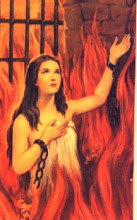The forecast for Saturday, April 17 called for rain and all the day there was a steady build up the eventual arrival of the showers shortly following six o’clock that evening. Dusk came suddenly and when I arrived at the Jonsson Theater it was already pitch dark and the downpour was in full douse mode. Coming upon the courtyard with the Spirit Rocks, I was amazed by the crowd out side of the theater. I thought that having arrived at least thirty minutes early would I would miss most of the crowds, but people were still outside, so instantly my hopes were peaked.
Side Show is a typical American Broadway musical. The plot of the story is nearly all sung, with brief speaking interludes in between. Each of the songs was accompanied by an orchestra that was very well hidden (most of the time) behind large set pieces. The orchestra consisted of mostly aerophones: saxophone, clarinet, oboe, tuba and flute were observed. The use of each of these set the musical mood for each song, for example, the oboe could be heard used in the Sheik’s appearance in the opening song. The oboe was played in a way reminiscent of eastern music with eight-notes, small pitch intervals and ornamentation.
Most of the songs were melody centric and were homophonic. There was a focus on one melody and the music did not vary much form that melodic theme. One element was the use of percussion in the music. Instead of using percussion to keep a beat, it was used as another ornamental element. So even though there were songs where snare drums were used as pace-keepers, the percussion could best be heard in the forms of bells and chimes. The chimes in particular were used as a tinny crescendo that would call attention to a particularly emotionally charged bit of singing.
During the first half of the musical there were many more characters on stage then during the last half. The first half was mainly introductory and told the origin of the show’s stars, the conjoined twins Daisy and Violet. Since the first part of the musical was set in a freak show, many of the actors were free to move onstage, jumping and somersaulting and occasionally moving around the stage and into the audience for dramatic effect. The actors’ movements were fewer in the second half of the musical, mostly because of the shift in the plot to focus more on character development and affect.
Amusingly, the orchestra was obscured for the nearly the entire length of the performance. Conveniently they were always hidden from sight behind some mammoth set piece. Their little perch at the back of the stage was even painted to match the colors of the sets so that they would blend in further. Clearly they were meant to be heard and not seen.
The house was nearly packed and I was very surprised by the number of people in attendance. Outside it was poring buckets, and nothing demotivates people quite like precipitation. The audience was about ninety percent students and a few older people, who I guess were either parents there to support their children’s artistic aspiration or just local musical enthusiasts. Audience reaction was very warm and I believe that most of the people in attendance were entertained. Luckily the songs were easy to follow and there were no significant mistakes. Do to the “middle brow” status of stage musicals, the audience felt free to clap whenever they felt. This could be after a large cadence where the song would change tempo, and it would still be permissible. Possibly the fact that this was the last performance could have effected audience attendance and reaction.
I conclusion Side Show was a quintessential American-style musical with and emphasis on singing with musical accompaniment that is used in both a melodic and ornamental way. Both voice and orchestra are used as narrative storytelling devices.
Monday, April 26, 2010
Subscribe to:
Post Comments (Atom)

No comments:
Post a Comment